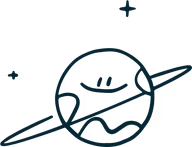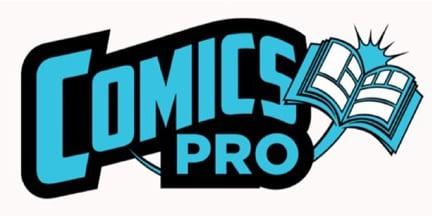If you click on a link and make a purchase we may receive a small commission. Read our editorial policy.
Flying whales, mechs, and Miyazaki vibes: Inside Netflix's Leviathan anime with the people who made it [Popverse Jump]
How a hit Miyazaki-esque book became a Netflix anime in Leviathan

Enjoy this complimentary article, previously available exclusively for Popverse members. If you like what you see, consider becoming a Popverse member.
There are only so many times that we can explain that anime is truly an international phenomenon, but now we’ve got the perfect example of just how global it is. Netflix is bringing Leviathan to our screens on July 10, 2025. A Japanese anime helmed by a French director and based on a book series by an American author, Leviathan’s unique view of the world stands out from an increasingly packed summer 2025 anime season - and gives a fascinating snapshot of the future of the anime industry. We managed to sit down and talk with author Scott Westerfeld and director Christophe Ferreira ahead of Leviathan’s release on Netflix.
Leviathan follows an alternate history of World War I that features two cultures divided by their diverging technology. The Clankers, who stand in for the Central Powers of World War I, have steampunk-style mechs, while the Darwinsts, who have mastered DNA to the point of fabricating animals to serve as both transport and weapons, set sail on giant ships powered by whales and wield bats as their anti-aircraft defenses.

If that sounds like the perfect setup for a Studio Ghibli film, you’re right.
“Leviathan is about a flying whale airship in World War I, which already sounds like a Miyazaki movie,” says Scott Westerfeld, who wrote the books that the Leviathan series is based on. “The trilogy is full of strange creatures, and has two young spunky main characters, so I get why the comparison is made. Leviathan comes out of everything I enjoy writing about – airships, bioengineering, vintage tech, diplomacy, girls pretending to be boys – so maybe it matches the collage-of-cool-stuff vibe that Miyazaki movies always have.”
Having seen the series myself (perks of the job!), it felt like anime was the perfect format for Leviathan.
“The books had been optioned back in 2014 as a live-action series, but that was perhaps too ambitious, and never got off the ground,” Westerfeld explains. “So, when I was approached by Netflix Japan in 2019, it all made sense. I’ve always been a huge Miyazaki fan (like anyone who loves airships) and any story that features a flying whale is crying out to be an anime.”
“I’m sure the books are influenced by Porco Rosso and Castle in the Sky, with a measure of Kiki’s Delivery Service,” Westerfeld tells me. “There’s a theory that every director makes one film their whole life, in which case Miyazaki’s One Film (for me, anyway) would be called 'Look at this aircraft! Just look at it!' I’d also argue that there are hints of Princess Mononoke mixed in, as the two main characters, the noble Alek and the aforementioned "girl-disguised-as-a-boy" Deryn find themselves on opposite sides of a war but fighting to bring their two peoples together.

Leviathan’s animation is handled by Orange, a company that has become one of the best in the world at creating expressive, action-filled animation through CG. Their work on Trigun Stampede and Beastars are highlights for me, but the technology has both limitations and strengths.
“There’s actually a lot to say about the differences,” Christophe Ferreira tells me when comparing traditional 2D animation to the CG animation that Orange is known for. “The two techniques are fundamentally different. You’re not paying attention to the same things, and the limitations or freedoms you have vary drastically between 2D and CG. For instance, in 2D animation, if you want a character to put on a jacket or tie their shoes, it’s just a matter of drawing it – time-consuming, yes, but still feasible. In CG, a scene like that could be disproportionately expensive. Every added layer of interaction with clothing, or even new movements, might require specific rigging or simulation work, which adds up quickly. So you learn to avoid or rethink those kinds of scenes at the E-konte [storyboard] stage when possible.”
Ferreira goes on to give a specific example of this, where one of the two protagonists, Alek, is lying in bed without shoes.
“The issue was that we never created a 3D model of him wearing just socks. So, I had to draw the socks myself, frame by frame, directly onto the final renders. It’s a small detail, but it shows how even something that seems minor can become a challenge when it wasn’t anticipated early enough.”
“On the other hand, one great advantage of CG – especially in a TV series context – is the ability to create long shots with characters moving in perspective or just walking around. That kind of shot would be a nightmare to handle in a 2D TV production. In CG, it’s much more achievable and can add a cinematic quality to the show.”
Character design is also more expensive and time-consuming in a CG animated series.
“In 2D, if you need a new character, you can just draw it – sometimes even at the layout stage,” Christophe Ferriera explained to me. “But in CG, each new character has to be modeled, rigged, textured… so it’s a big investment. That means the number of characters in a show has to be carefully considered at the script stage, and you can’t improvise as easily. On the flip side, one of CG’s strongest advantages is consistency. Once a 3D character model is built, and Orange does their magic, it looks the same across the entire show. There’s no need to constantly correct drawings to maintain model consistency, which is often a big challenge in 2D. That frees up the team to focus on other creative elements, like composition, lighting, and layout.”

Christophe Ferreira isn’t exactly a newcomer to the anime scene, and he’s seen the shift in the industry that allows an international production like Leviathan to be made.
“I’ve been living in Tokyo and working in the animation industry for over 20 years now. Back in the early 2000s, Japanese studios weren’t particularly looking to work with foreigners. The local industry, while already important, was smaller than it is today. There were very few non-Japanese people in the field back then. But things have changed a lot. In recent years, there’s been a noticeable wave of foreign artists coming to Japan to work in various roles across the animation pipeline. Thanks to the internet, many others are now contributing remotely from abroad.”
“I think the main reason for this shift, beyond a few exceptional cases, is the growing demand for content. The number of anime productions has exploded, but the number of skilled animators in Japan hasn’t increased at the same pace," Ferriera tells me. "In fact, fewer and fewer young Japanese people seem to dream of becoming animators, due to the difficulty and intensity of the job. So, the industry has started opening up to international talent – out of both necessity and opportunity. Working on Leviathan has been a great example of this evolution – Studio Orange stepping up to the occasion with their remarkable animation expertise, while Qubic played a crucial role by bridging Western and Japanese perspectives, helping create a project that truly reflects the direction anime is heading.”
Leviathan, with its Ghibli-esque visuals and international crew, is out on July 10 on Netflix.
Want to know what's coming up next in pop culture? Check out Popverse's guides to:
Follow Popverse for upcoming event coverage and news
Find out how we conduct our review by reading our review policy
Let Popverse be your tour guide through the wilderness of pop culture
Sign in and let us help you find your new favorite thing.















Comments
Want to join the discussion? Please activate your account first.
Visit Reedpop ID if you need to resend the confirmation email.